Exciting New Painting Trends To Try This Year
Are you ready to dive into the vibrant world of art? This year is all about innovation and creativity in painting, with a variety of trends that are not just eye-catching but also allow artists to express their unique styles. Whether you're a seasoned painter or a curious beginner, there’s something for everyone to explore. From bold color combinations that make a statement to textured surfaces that invite touch, the possibilities are endless. Let’s embark on this colorful journey together and discover how you can elevate your artistic expression this year!
This year, artists are breaking the mold by embracing vibrant and unexpected color pairings. Imagine a canvas splashed with electric blues paired with soft pastels, or fiery reds clashing with calming greens. These striking visual contrasts not only capture attention but also evoke deep emotions. To create your own bold combinations, consider the following tips:
- Experiment with complementary colors to create dynamic visuals.
- Use color theory to understand how colors interact.
- Don’t shy away from mixing warm and cool tones for added depth.
By mixing and matching hues, you can create artwork that not only stands out but also tells a story. So grab your brushes and start playing with colors that excite you!
Texture is becoming a focal point in painting, adding a new dimension to traditional art forms. Artists are now exploring various techniques to create depth and dimension, making their artwork more engaging and tactile for viewers. Think of texture as the spice in your painting; it can transform a flat surface into a multi-layered experience. Some popular methods to achieve texture include:
- Using palette knives to create thick, impasto layers.
- Incorporating sand or fabric into your paint for a mixed media effect.
- Experimenting with sponges or brushes to add unique patterns.
By focusing on texture, you can invite your audience to not only see your art but also feel it, creating a more immersive experience.
One of the most exciting trends this year is the use of mixed media. Combining different materials and mediums can lead to unique artistic results that are truly one-of-a-kind. Imagine layering paint with fabric, paper, and found objects to create a rich tapestry of textures and colors. This approach encourages creativity and allows for endless possibilities in your artwork. To get started, consider incorporating:
- Old magazines or newspapers for collage elements.
- Fabric scraps to add warmth and depth.
- Natural elements like leaves or twigs for organic textures.
Mixed media not only enhances your artwork but also tells a story of its own, making each piece a personal journey.
Sustainability is a growing concern in the art world, and this year, eco-friendly paints are taking center stage. Artists are increasingly seeking out options that not only reduce environmental impact but also offer unique qualities and finishes. By choosing eco-friendly paints, you’re not just being kind to the planet; you’re also opening up a world of new artistic possibilities.
Natural pigments are making a comeback, providing artists with organic and non-toxic alternatives. These pigments are derived from minerals, plants, and other natural sources, offering a wide range of colors that are both vibrant and safe. By using natural pigments, you can create stunning pieces while being mindful of your health and the environment.
Water-based paints are becoming increasingly popular for their ease of use and environmental benefits. They are not only easier to clean up but also emit fewer harmful chemicals compared to traditional oil paints. Incorporating water-based solutions into your art projects can enhance your creative process while keeping your workspace safe and healthy.
Geometric patterns are trending in contemporary art, offering a modern twist to traditional painting techniques. By incorporating shapes and lines into your artwork, you can create eye-catching compositions that captivate viewers. Think of geometric patterns as the framework of your painting; they provide structure while allowing for creativity to flow.
Understanding the balance between symmetry and asymmetry can enhance your artwork significantly. Symmetrical designs can evoke feelings of harmony and stability, while asymmetrical compositions can create tension and intrigue. Experimenting with both can lead to a dynamic visual experience that keeps your audience engaged.
Using repetition in geometric designs can create rhythm and movement within your artwork. This technique draws viewers into your piece, inviting them to explore every detail. Consider repeating shapes, colors, or patterns to establish a sense of flow that guides the viewer's eye across the canvas.
Q: What are the best colors to use for bold combinations?
A: Bright colors like electric blue, fiery red, and vibrant yellow work well together. Don’t be afraid to experiment with unexpected pairings!
Q: How can I add texture to my paintings?
A: You can use palette knives, sponges, or even incorporate materials like fabric and sand into your paint.
Q: Are eco-friendly paints as vibrant as traditional paints?
A: Yes! Many eco-friendly paints offer a range of vibrant colors and finishes that can rival traditional options.
Q: What is mixed media?
A: Mixed media involves combining different materials and art forms, such as paint, fabric, and found objects, to create unique artwork.

Bold Color Combinations
This year, artists are stepping out of their comfort zones and diving into the realm of . It’s like a breath of fresh air, inviting creativity to flourish in ways we haven’t seen in a while. Imagine walking into a gallery where the walls are a riot of colors, each painting demanding your attention with its vibrant hues. The key here is to mix and match colors that you might not typically associate with each other. Think of it like a daring dance between colors—sometimes they clash, but when they find harmony, it’s truly magical!
To create these striking visual contrasts, consider using a color wheel as your guide. It’s a simple tool that can help you identify complementary colors—those that sit opposite each other on the wheel, like blue and orange or red and green. These combinations can evoke strong emotions and draw viewers into your artwork. For instance, a bright yellow paired with a deep purple can create a sense of excitement and energy, while a rich teal next to a warm coral can evoke a sense of calm and balance.
But don’t stop there! Experiment with analogous colors—those that are next to each other on the color wheel, such as blue, blue-green, and green. These combinations can create a more serene and cohesive look, perfect for landscapes or abstract pieces that aim to soothe the viewer. The beauty of working with bold colors is that it encourages you to trust your instincts. What feels right? What colors make your heart race? Allow yourself to play and explore!
As you embark on this colorful journey, remember that the intensity and saturation of the colors you choose can also impact the overall feel of your artwork. High-saturation colors can create a sense of vibrancy and urgency, while muted tones can evoke a more subdued and contemplative atmosphere. So, don’t hesitate to layer colors, adjusting their opacity to find that perfect balance that speaks to you and your audience.
In summary, embracing bold color combinations in your art this year is not just about making a statement; it’s about inviting the viewer into an emotional experience. So grab your brushes, unleash your creativity, and let those colors collide! You might just find that what starts as a chaotic splash of paint transforms into a stunning masterpiece that resonates with everyone who lays eyes on it.
- What are complementary colors? Complementary colors are pairs of colors that are opposite each other on the color wheel, such as blue and orange, which create a vibrant contrast when used together.
- How can I create depth with color? You can create depth by layering colors of varying transparency and saturation, allowing some colors to show through while others stand out boldly.
- Are there any tips for mixing colors? Start with a limited palette and gradually add colors to see how they interact. Experimenting on a separate canvas can help you discover new combinations without the pressure of ruining a piece.
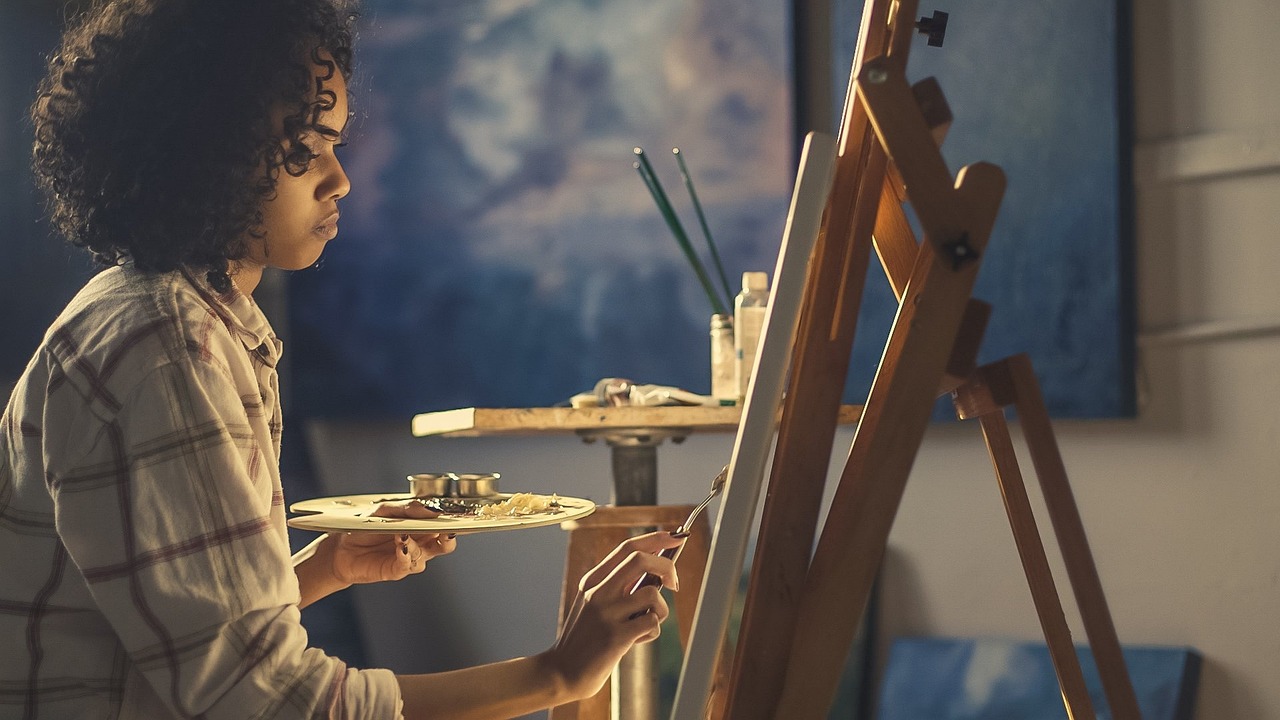
Textured Surfaces
This year, the art world is buzzing with excitement over the incorporation of texture in painting. It's not just about slapping some paint on a canvas anymore; artists are diving deep into the realm of tactile experiences. Imagine walking through an art gallery and being drawn to a piece not just by its colors, but by its physical presence. Texture adds a whole new dimension to artwork, inviting viewers to engage with it on a sensory level.
So, how can you incorporate texture into your paintings? There are a plethora of techniques that can elevate your work from flat to fabulous. For instance, you might consider using palette knives to create thick, impasto layers that stand proud off the canvas. This technique not only adds depth but also catches the light in intriguing ways, creating a visual feast for the eyes. Alternatively, you could explore the world of collage, where you mix different materials—like paper, fabric, or even natural elements—into your paint. This approach can lead to stunning, multi-dimensional pieces that tell a story.
Another exciting method is to experiment with textured mediums. These are special additives that can be mixed into your paint to create a variety of surfaces. For example, you might use sand or gel mediums to achieve a gritty, organic feel. The beauty of this technique lies in its versatility; you can create everything from rough landscapes to smooth, flowing abstracts. The key is to play around and see what resonates with your artistic vision.
But why stop there? Think about how you can use layering to build up texture over time. Start with a base layer of paint and then progressively add more materials or colors. This way, each layer interacts with the one beneath it, creating a rich tapestry of color and texture that invites exploration. The final piece will not only be visually striking but will also have a story to tell through its layers.
As you embark on your textured journey, consider the impact of color and texture working together. A vibrant color palette can enhance the effect of texture, making your artwork pop even more. For instance, a deep blue textured background can create a striking contrast with bright yellow accents, drawing the viewer's eye and creating a sense of movement. Remember, the goal is to create a piece that is not just seen, but felt.
In conclusion, incorporating texture into your paintings is an exciting way to breathe new life into your art. Whether you choose to use palette knives, textured mediums, or layering techniques, the possibilities are endless. So grab your tools, unleash your creativity, and let your imagination run wild. Your canvas is waiting!
- What materials can I use to create texture in my paintings? You can use palette knives, textured mediums, sand, fabric, paper, and even natural elements like leaves or twigs.
- How do I know if my texture is too much? It's all about balance. Step back and see if the texture enhances your piece or distracts from it. Sometimes less is more!
- Can I combine different textures in one painting? Absolutely! Combining various textures can create a dynamic and engaging piece, just be mindful of how they interact with each other.
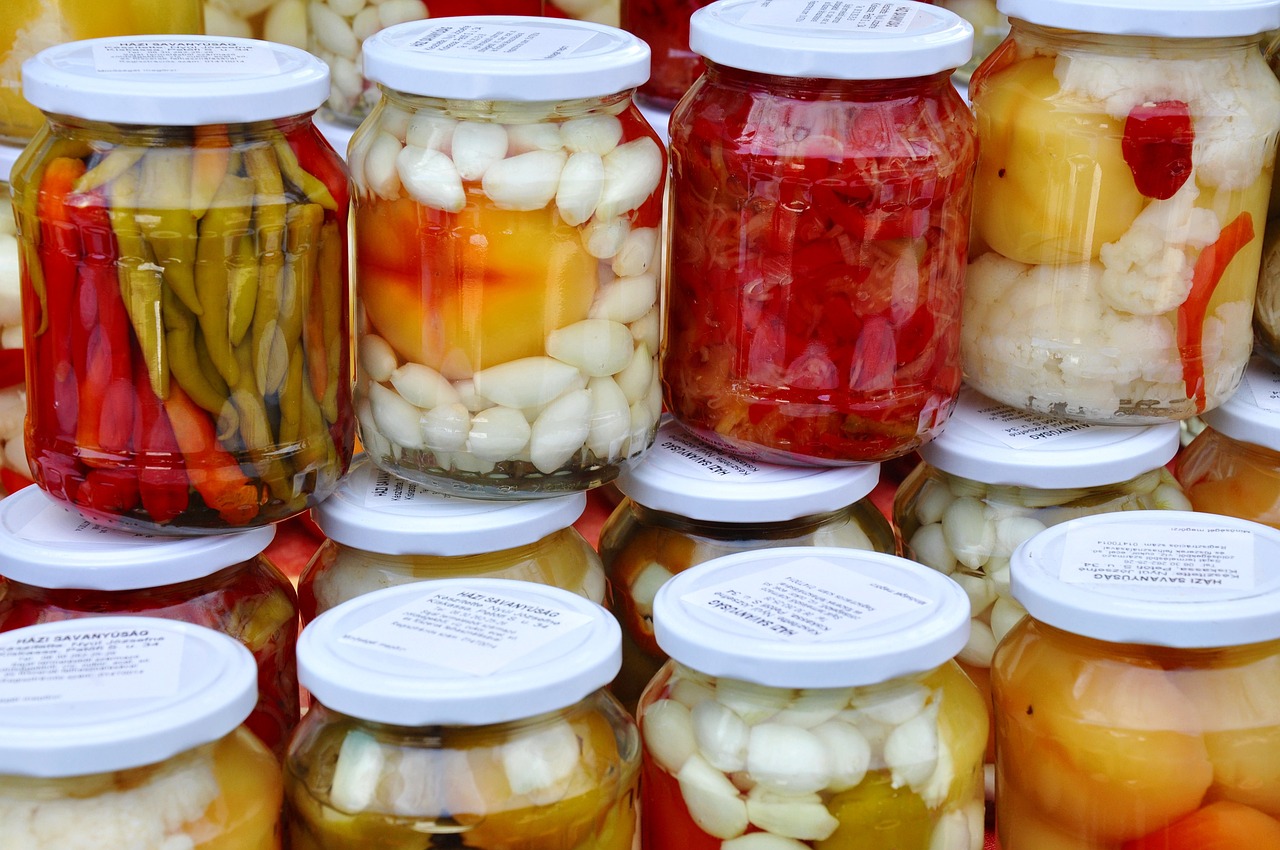
Mixed Media Approaches
When it comes to expressing creativity, are like a playground for artists. Imagine combining the fluidity of paint with the texture of fabric or the intrigue of found objects. This year, artists are stepping outside the traditional boundaries of painting and embracing a world of unlimited possibilities. Mixing different materials not only adds depth to your artwork but also invites viewers to engage with your piece on multiple levels. Can you feel the excitement? It's akin to a chef experimenting in the kitchen, where each ingredient can transform a simple dish into a gourmet masterpiece.
So, how do you get started with mixed media? First, think about what you want to convey. Are you aiming for a specific emotion or theme? Once you have that in mind, gather your materials. Here are some common elements you can incorporate:
- Paint: Acrylics, watercolors, or oils can serve as your base.
- Paper: Use scrapbooking paper, newspapers, or even old book pages to add layers.
- Fabric: Textiles can introduce a tactile element that draws the viewer in.
- Found Objects: Everyday items like buttons, leaves, or even pieces of plastic can create unexpected focal points.
One of the most thrilling aspects of mixed media is the freedom to experiment. Don’t be afraid to combine techniques that seem outlandish at first. For instance, you might start with a watercolor background, then layer on some collage elements, and finally finish with a few strokes of oil paint. The result can be a stunning visual narrative that tells a story far beyond what a single medium could achieve.
Moreover, mixed media allows you to play with dimensions and textures. Consider using 3D elements to create a visually striking contrast against flat surfaces. This could mean gluing fabric or paper to your canvas, or even incorporating small objects that jut out. The interplay of light and shadow on these surfaces can add a captivating dynamism to your work.
Incorporating mixed media techniques can also be a fantastic way to explore your artistic voice. As you experiment with different materials, you may discover new styles and preferences that resonate with you. Just like an architect who plays with various designs before settling on a final blueprint, you can create numerous drafts and variations until you find what truly speaks to you.
In summary, mixed media approaches are not just a trend; they are a revolution in the art world that invites you to break free from conventional norms. So grab your brushes, gather your materials, and let your imagination run wild. The canvas is your playground, and the possibilities are endless!
Q: What is mixed media art?
A: Mixed media art involves combining different materials and techniques in a single artwork. This can include paint, paper, fabric, and found objects, allowing for a diverse range of textures and effects.
Q: Do I need special materials for mixed media?
A: Not necessarily! You can start with basic supplies like paints and papers you already have. As you get more comfortable, you can experiment with various materials.
Q: Can I use mixed media techniques in traditional painting?
A: Absolutely! Mixed media can enhance traditional painting by adding layers, textures, and new dimensions to your work.
Q: How do I know what materials work well together?
A: It often comes down to experimentation. Try different combinations and see what resonates with you. There are no strict rules in art!
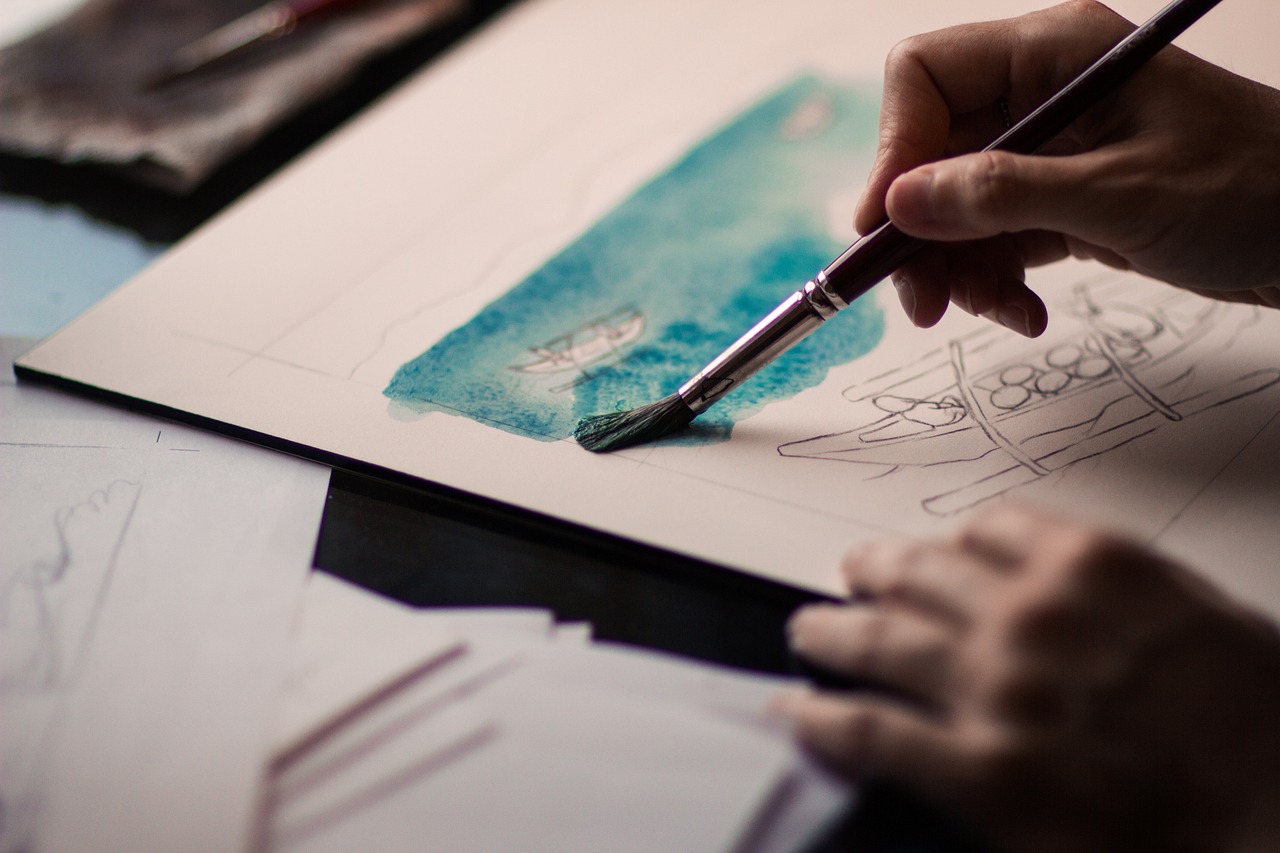
Collage Techniques
Collage techniques are truly revolutionizing the way artists express themselves, allowing for a delightful blend of painting and mixed media. Imagine standing in front of a canvas that bursts with life, where layers of color, texture, and imagery dance together in harmony. This year, many artists are diving headfirst into the world of collage, and it’s easy to see why. By integrating various materials—such as paper, fabric, and even found objects—into traditional painting, you can create dynamic and engaging compositions that tell a story.
One of the most exciting aspects of collage is the freedom it offers. You can combine different elements to evoke emotions and provoke thoughts. For instance, consider using vintage magazine clippings alongside vibrant acrylic paints. This juxtaposition can create a striking visual dialogue that captivates the viewer's attention. The beauty of collage lies in its ability to surprise; just when you think you’ve seen it all, a new layer or texture reveals itself, inviting further exploration.
To effectively blend painting and collage, it’s crucial to think about the composition and how each element interacts with one another. Here are some techniques to consider when creating your collage:
- Layering: Start with a base layer of paint and then add paper or fabric elements on top. This can create depth and intrigue.
- Color Coordination: Ensure that the colors of your collage materials complement or contrast with your painted elements to enhance the overall aesthetic.
- Texture Play: Incorporate materials with different textures, such as rough fabrics or smooth papers, to engage the viewer's sense of touch visually.
Moreover, don't shy away from experimenting! The beauty of collage techniques is that there are no strict rules—only guidelines. You can rip, cut, or tear your materials to create interesting shapes and forms. Consider using a variety of adhesives to explore how they affect the final look of your artwork. Some artists prefer matte mediums for a subtle finish, while others might opt for glossy adhesives to make their collages pop.
As you embark on your collage journey, remember that the process can be as enjoyable as the final product. Take your time, play around with different combinations, and allow your creativity to flow. The more you experiment, the more unique your artwork will become. So grab your supplies, unleash your imagination, and start crafting stunning collages that reflect your artistic voice!
Q: What materials do I need to start with collage techniques?
A: You’ll need a canvas or paper as a base, various papers (like magazines, newspapers, or colored paper), adhesive (like glue or gel medium), and your choice of paints. Optional materials include fabric, found objects, and tools for cutting.
Q: Can I use digital elements in my collages?
A: Absolutely! Digital prints or photographs can be incorporated into your collage, adding a modern twist to traditional techniques.
Q: How can I ensure my collage is durable?
A: Use high-quality adhesives and seal your finished piece with a protective coating, such as a varnish or fixative, to enhance durability and longevity.
Q: Is there a specific style I should follow when creating a collage?
A: There’s no right or wrong style in collage art. Feel free to explore and develop your unique approach. The key is to enjoy the process and express yourself!
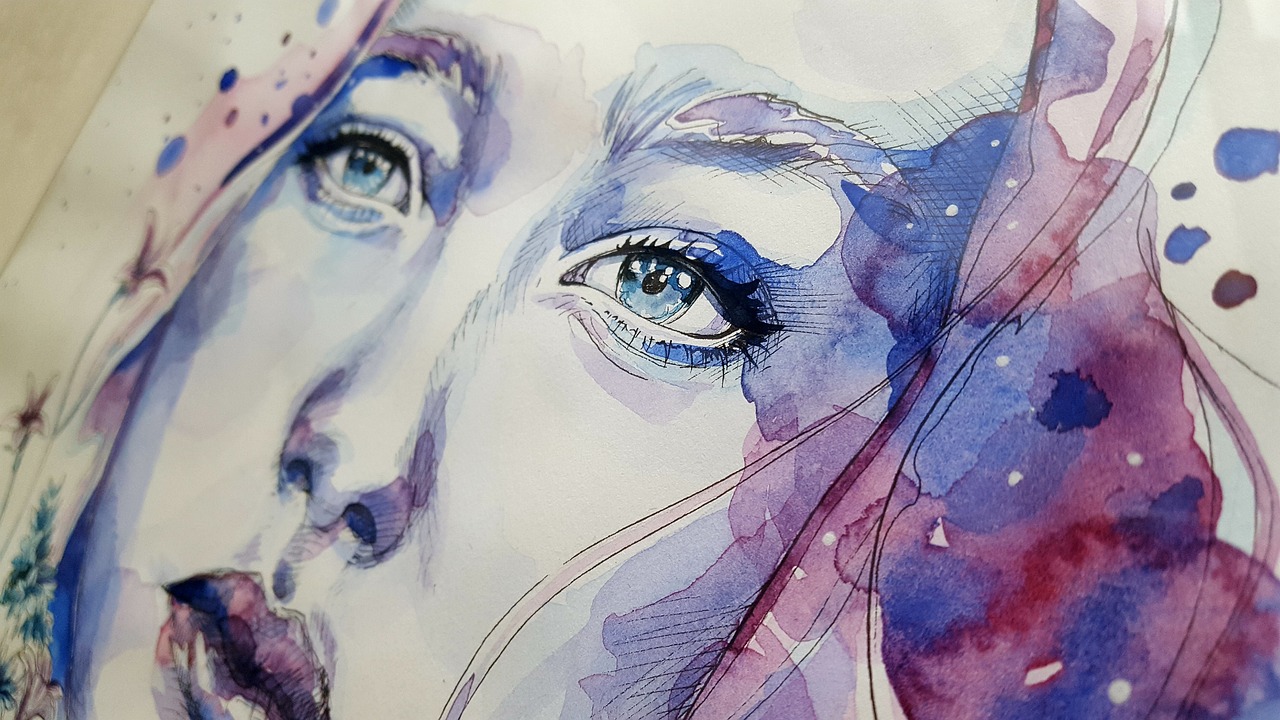
Layering Paints
Layering paints is an incredibly exciting technique that can transform your artwork from ordinary to extraordinary. Imagine building a vibrant landscape or a stunning portrait, each layer adding depth, texture, and complexity to your piece. When you think about it, layering is much like constructing a house; each layer serves a purpose, and together, they create a solid structure. In painting, this means using different types of paint—acrylics, oils, watercolors, and more—each contributing its unique characteristics to the final composition.
One of the most fascinating aspects of layering is the interplay between transparency and opacity. Transparent layers can allow the colors beneath to shine through, creating a luminous effect that captivates the viewer. On the other hand, opaque layers can provide bold statements and solid forms. The key to mastering this technique lies in understanding how these properties interact with each other. For example, starting with a transparent wash can establish a base tone, while subsequent opaque layers can add definition and detail.
To achieve effective layering, consider the following tips:
- Start with a solid foundation: Begin with a base layer that sets the tone for your artwork. This could be a light wash of color or a neutral background that allows your subsequent layers to pop.
- Experiment with drying times: Different paints have varying drying times. Take advantage of this by layering wet-on-wet for blended effects or wet-on-dry for sharper lines and textures.
- Use glazing techniques: Glazing involves applying a thin, transparent layer of paint over a dried layer. This can enhance color vibrancy and create a sense of depth.
Additionally, consider the tools you use for layering. Brushes, palette knives, and even sponges can create different textures and effects. For instance, a palette knife can add a thick, impasto layer that contrasts beautifully with the smoothness of a glaze. The versatility of layering paints allows for endless creativity, enabling you to develop a unique style that reflects your artistic voice.
Moreover, layering is not just about the physical application of paint; it’s also about the emotional journey you take as an artist. Each layer can represent a thought, a feeling, or a moment in time. This makes the process deeply personal and profoundly rewarding. So, as you explore the world of layering paints, remember to embrace the journey, experiment boldly, and let your creativity flow.
Q: What is the best type of paint for layering?
A: Acrylic paints are often recommended for beginners due to their quick drying time and versatility. However, oil paints are also excellent for layering because they allow for extended working time, enabling more blending and manipulation.
Q: How do I know when a layer is dry enough to add another?
A: A good rule of thumb is to wait until the surface feels dry to the touch. For oil paints, this can take longer than acrylics, so patience is key. You can also perform a gentle touch test; if the layer feels tacky, it’s best to wait a bit longer.
Q: Can I layer different types of paint?
A: Yes, but be cautious. Acrylics can be layered over oils once the oil layer is completely dry, but the reverse is not recommended. Always test on a small area first to ensure compatibility.
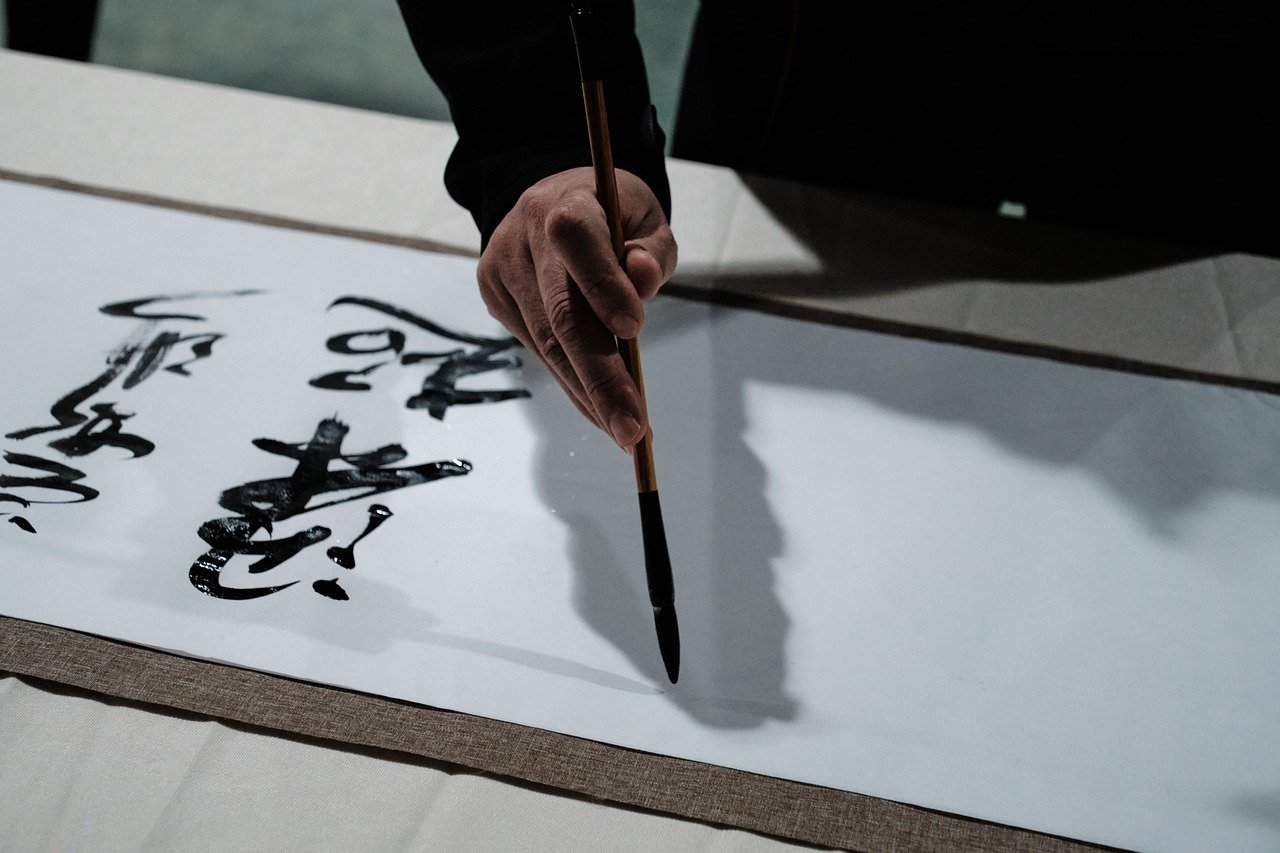
Innovative Brushwork
When it comes to painting, brushwork is like the heartbeat of your artwork—it brings life and movement to the canvas. This year, artists are pushing the boundaries of traditional techniques and diving into styles that can transform a simple piece into a mesmerizing masterpiece. Have you ever thought about how the way you hold your brush can completely change the outcome of your painting? It's true! The brush is not just a tool; it's an extension of your artistic expression.
Let's explore some of the exciting techniques that are taking the art world by storm. One popular method is the dry brush technique. This involves using a brush with very little paint on it, creating a scratchy, textured effect that can add a rustic charm to your work. Imagine painting a landscape where the grass appears to sway in the wind—this technique can make that vision come alive. Another technique that’s capturing attention is the wet-on-wet technique, where wet paint is applied onto wet paint. This method allows colors to blend seamlessly, creating beautiful gradients that mimic the soft transitions found in nature.
But wait, there’s more! Have you heard of the palette knife technique? Instead of using a brush, artists are now opting for palette knives to apply paint. This technique gives a bold, impasto effect, adding depth and dimension to the artwork. It's like sculpting with paint—each stroke can create a new texture that invites viewers to reach out and touch the canvas. The thrill of experimenting with different tools and techniques can lead to stunning results that are uniquely yours.
To illustrate the impact of these innovative techniques, let’s take a look at a comparison table that showcases different brushwork styles and their effects:
| Brushwork Technique | Description | Visual Effect |
|---|---|---|
| Dry Brush | Minimal paint on the brush, creating a textured, scratchy effect. | Rustic, organic appearance. |
| Wet-on-Wet | Applying wet paint onto wet paint for smooth blending. | Soft gradients and transitions. |
| Palette Knife | Using a palette knife to apply and manipulate paint. | Bold, impasto texture with depth. |
As you dive into these innovative brushwork techniques, remember that the beauty of art lies in experimentation. Don’t be afraid to mix and match styles or even create your own unique approach. Art is a journey, and each brushstroke adds to your story. So grab your brushes, get messy, and let your creativity flow! Who knows? You might just discover a new technique that sets your artwork apart from the rest.
Q: What is the best brush for beginners?
A: A versatile round brush is a great starting point for beginners, as it can be used for various techniques.
Q: How do I clean my brushes properly?
A: Clean brushes with water or solvent immediately after use to maintain their shape and longevity.
Q: Can I mix different painting mediums?
A: Yes! Mixing mediums can create interesting textures and effects, but be sure to understand how they interact.
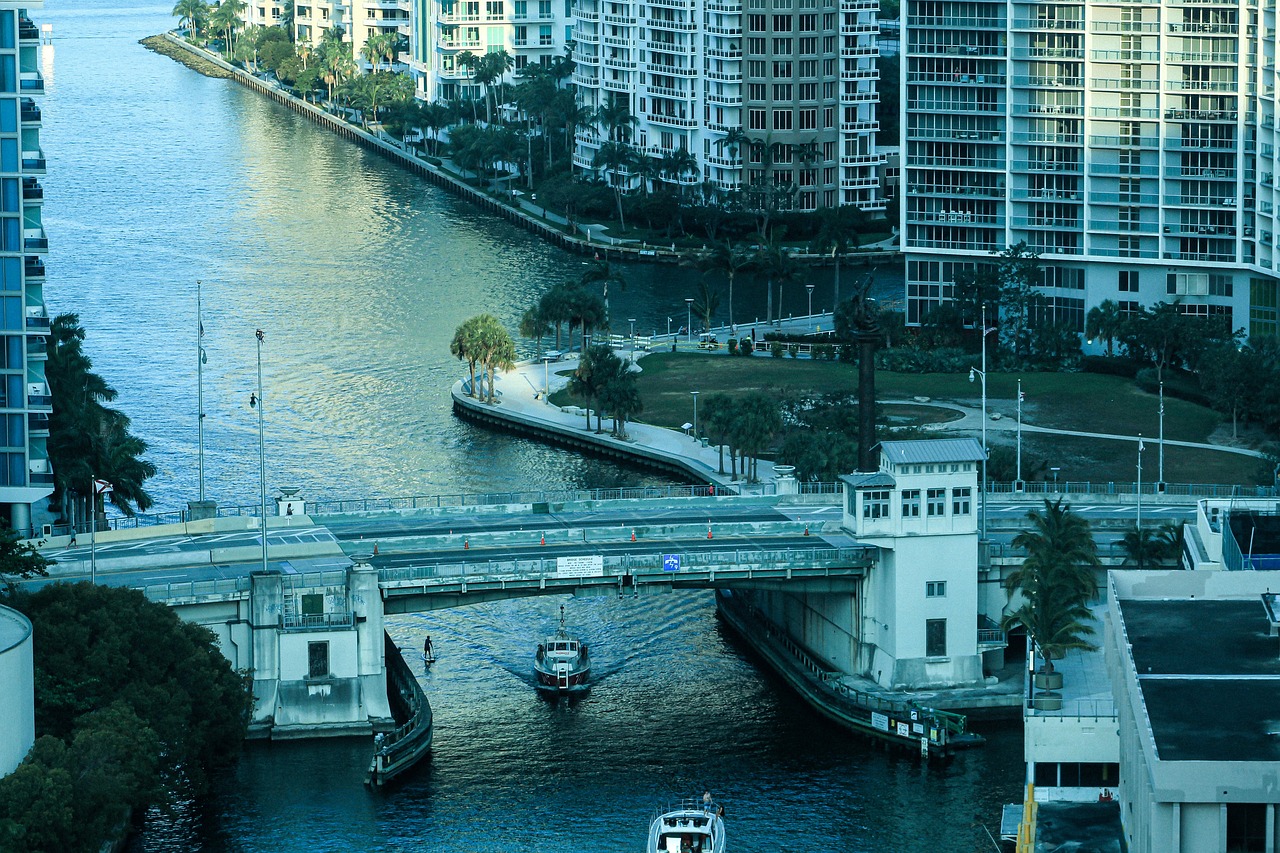
Eco-Friendly Paints
This year, the art world is buzzing with a strong emphasis on sustainability, and eco-friendly paints are at the forefront of this movement. Artists are increasingly aware of the impact their materials have on the environment, and they are making conscious choices to embrace more sustainable options. But what exactly are eco-friendly paints? In simple terms, these are paints that are formulated without harmful chemicals and are often made from natural or recycled materials. By choosing eco-friendly paints, you not only contribute to a healthier planet but also open up a world of unique qualities and finishes that traditional paints may not offer.
One of the most exciting aspects of eco-friendly paints is the variety of options available. For instance, many artists are gravitating towards natural pigments, which are derived from minerals, plants, and other organic materials. These pigments not only provide vibrant colors but are also non-toxic, making them a safer choice for both artists and the environment. Additionally, the use of water-based paints is on the rise. These paints are known for their ease of use and quick drying times, which can be a game changer for artists looking to work efficiently. Water-based paints also have lower levels of volatile organic compounds (VOCs), which means they release fewer harmful emissions into the air during application and drying.
To give you a clearer picture of the benefits of eco-friendly paints, here’s a quick comparison:
| Type of Paint | Environmental Impact | Health Benefits | Color Quality |
|---|---|---|---|
| Natural Pigments | Low impact, biodegradable | Non-toxic, safer for artists | Vibrant, rich colors |
| Water-Based Paints | Lower VOCs, less pollution | Reduced respiratory issues | Good coverage, quick drying |
| Traditional Oil Paints | Higher impact, toxic solvents | Potential health risks | Deep, rich tones |
As you can see, eco-friendly paints not only offer a more sustainable approach to art but also provide a range of benefits that can enhance your creative process. Imagine the satisfaction of knowing that your artistic expression is contributing to a healthier planet! Plus, with the rise of these eco-conscious materials, artists are discovering new ways to innovate and experiment with their work.
So, if you're looking to make a positive change in your artistic practice, consider incorporating eco-friendly paints into your next project. Not only will you be doing your part for the environment, but you'll also be diving into a world of creativity that prioritizes health and sustainability. Whether you’re a professional artist or a hobbyist, the choice of materials can significantly impact your work and the world around you. Why not make it a choice that reflects your values?
- What are eco-friendly paints made of? Eco-friendly paints are typically made from natural pigments, plant-based oils, and water-based solutions that minimize harmful chemicals.
- Are eco-friendly paints more expensive? While some eco-friendly options may have a higher upfront cost, they can often save money in the long run due to their durability and ease of use.
- Can I achieve the same vibrancy with eco-friendly paints? Yes! Many eco-friendly paints are known for their vibrant colors and can provide results comparable to traditional paints.
- How do I clean up after using eco-friendly paints? Most eco-friendly paints can be cleaned up with soap and water, making them easy to work with and environmentally friendly.

Natural Pigments
In the ever-evolving world of art, are making a significant comeback. Artists are increasingly seeking out organic and non-toxic alternatives to synthetic paints, and for good reason! These pigments not only provide a unique aesthetic but also connect us to nature in a profound way. Imagine creating a stunning landscape painting using pigments derived from the very earth beneath your feet. From rich ochres to vibrant greens, the colors are as varied as the landscapes they represent.
One of the most exciting aspects of using natural pigments is their environmental benefits. Unlike conventional paints that can contain harmful chemicals, natural pigments are often derived from minerals, plants, or even insects, making them safer for both the artist and the environment. This shift towards sustainability is not just a trend; it’s a movement towards a more mindful and responsible approach to art-making.
When you work with natural pigments, you might find that they have a different application process compared to synthetic paints. They often require a bit more preparation, such as grinding the pigment into a fine powder or mixing it with a suitable binder. However, the results can be breathtakingly beautiful and worth the extra effort. The depth of color and the subtle variations in hue can add a level of richness that synthetic paints sometimes lack.
Here are some popular sources of natural pigments that you might want to explore:
- Earth Pigments: These are derived from clay and minerals, offering a wide range of earthy tones.
- Plant-Based Pigments: Colors like indigo and madder root provide vibrant blues and reds, respectively.
- Insect Pigments: Cochineal is a famous example, yielding a brilliant crimson hue.
As you experiment with these natural materials, you may find yourself not just creating art but also becoming a part of a larger narrative about sustainability and the appreciation of nature. Each brushstroke becomes a testament to the materials' origins, adding a layer of meaning to your work.
Q: Are natural pigments safe to use?
A: Yes, natural pigments are generally safe as they are derived from organic materials. However, it's always wise to check for any specific allergies.
Q: Can I mix natural pigments with synthetic paints?
A: While it is possible, mixing them can lead to unpredictable results. It's best to experiment and see what works for your artistic style.
Q: Where can I buy natural pigments?
A: Many art supply stores now offer natural pigments, and there are also online retailers specializing in eco-friendly art supplies.
Q: Do natural pigments fade over time?
A: Some natural pigments may be more prone to fading than synthetic ones, so it's essential to use proper sealing techniques and store your artwork away from direct sunlight.

Water-Based Solutions
In the ever-evolving world of art, water-based paints are rapidly gaining popularity among artists of all levels. Why, you ask? Well, these paints offer a multitude of benefits that not only enhance the artistic experience but also align with the growing demand for environmentally friendly practices. Imagine creating vibrant masterpieces without the overwhelming fumes of traditional solvents; that’s the beauty of water-based solutions!
One of the standout features of water-based paints is their ease of use. They are incredibly versatile, allowing artists to experiment with various techniques without the need for complicated setups. Whether you’re a beginner or a seasoned pro, you’ll find that water-based paints can be mixed and diluted with water, making them perfect for achieving the desired consistency and transparency. This flexibility opens up a world of possibilities—from delicate washes to bold, opaque applications.
Another compelling reason to embrace water-based solutions is their quick drying time. Unlike oil paints that can take days to cure, water-based options dry relatively fast, enabling artists to layer colors and make adjustments in a shorter time frame. This is especially beneficial for those who thrive on spontaneity and wish to capture fleeting inspirations on canvas. Plus, the clean-up process is a breeze; just soap and water will do the trick, allowing you to spend more time creating and less time cleaning!
Moreover, water-based paints are generally less toxic than their oil-based counterparts. This is a significant advantage for artists who might be sensitive to strong chemical odors or are working in small, enclosed spaces. By opting for water-based solutions, you not only prioritize your health but also contribute to a more sustainable art practice. With the increasing availability of high-quality water-based paints, artists can now achieve stunning results without compromising their well-being.
Incorporating water-based solutions into your art practice can lead to unique finishes and effects. For instance, you can create wash techniques that infuse your artwork with a soft, ethereal quality. Additionally, the ability to layer these paints allows for the development of rich textures and depth, giving your pieces an extraordinary visual appeal. Imagine the possibilities when you combine these paints with other mediums, such as acrylics or pastels, to create mixed media masterpieces!
For those curious about the variety of water-based paints available, here’s a quick overview:
| Type of Water-Based Paint | Characteristics | Best Used For |
|---|---|---|
| Acrylic Paint | Fast-drying, versatile, water-soluble | Canvas, paper, mixed media |
| Watercolor Paint | Transparent, fluid, creates soft washes | Paper, illustration, fine art |
| Gouache Paint | Opaque, vibrant colors, matte finish | Illustration, design, poster art |
As you can see, water-based solutions offer a rich palette of options for artists looking to innovate and express themselves. So, why not dive into this vibrant world of water-based paints? It could be the spark that ignites your creativity and transforms your artistic journey!
- What are the main advantages of using water-based paints? Water-based paints are easier to clean, quicker to dry, and generally less toxic compared to oil-based paints.
- Can I mix water-based paints with other mediums? Yes! Water-based paints can be combined with various mediums like acrylics and pastels for unique effects.
- Are water-based paints suitable for outdoor use? Many water-based paints are designed for outdoor use, but it’s important to check the specific product details for durability.
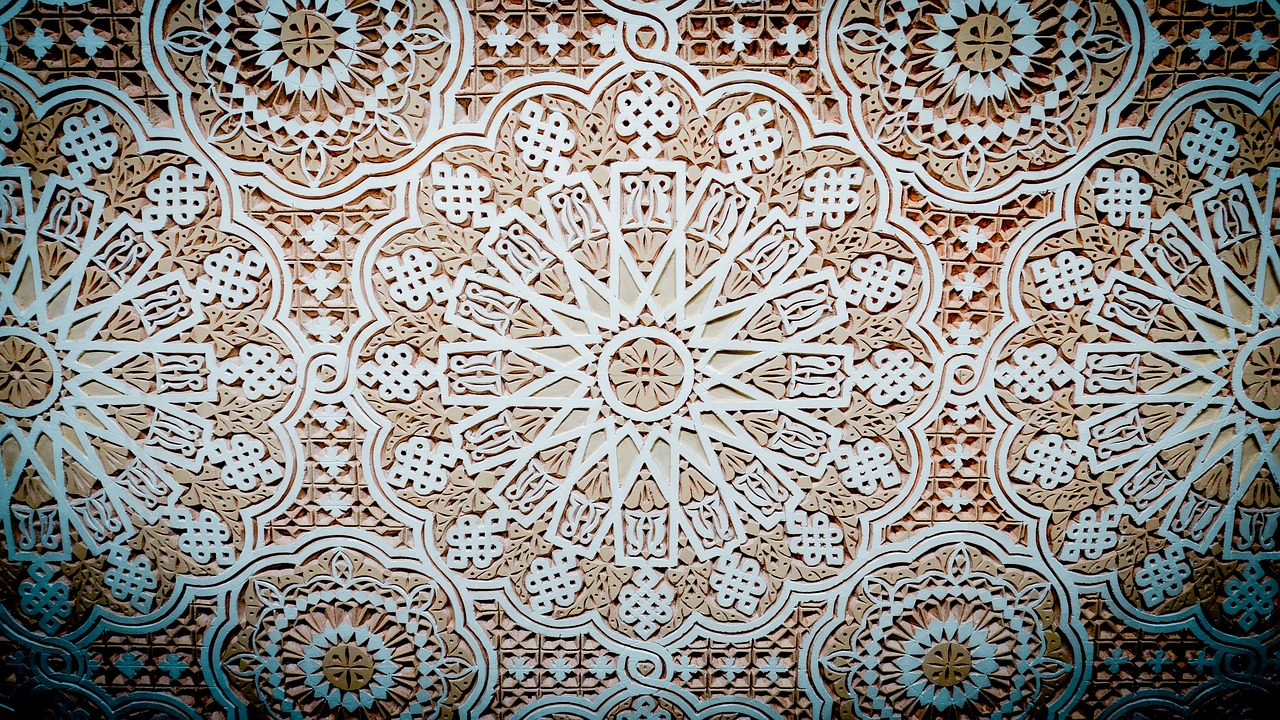
Geometric Patterns
This year, are taking the art world by storm, and it's not hard to see why. These designs are not just about shapes; they are a language of their own, telling stories through lines and forms. Imagine walking into a gallery where the walls are adorned with paintings that feature sharp triangles, smooth circles, and intricate hexagons, all harmoniously interwoven. It’s like stepping into a realm where math meets creativity, and the results are nothing short of breathtaking.
Incorporating geometric patterns into your artwork can be a game-changer. These patterns can create a sense of structure and order, allowing you to play with chaos and symmetry. When you think about it, life itself is filled with geometry. From the architecture of buildings to the arrangement of nature, embracing these shapes can elevate your artistic expression. So, how do you start? First, consider the shapes you want to work with. Whether it’s simple squares or complex fractals, each shape can convey different emotions and themes.
One of the most fascinating aspects of geometric art is the balance between symmetry and asymmetry. Symmetrical designs often evoke a sense of calm and stability, while asymmetrical arrangements can introduce tension and excitement. Think of a perfectly balanced painting where every element feels just right, compared to a more chaotic piece that grabs your attention and makes you wonder. Both approaches are valid and can be used effectively depending on the message you want to convey.
Additionally, using repetition techniques in your geometric designs can create a rhythm that draws viewers in. For instance, repeating a specific shape can lead the eye across the canvas, creating movement and flow. Imagine a series of concentric circles that guide the viewer's gaze to the center of the painting, or a pattern of triangles that creates a sense of upward motion. This technique not only enhances the visual appeal but also invites the audience to explore the artwork more deeply.
To give you a clearer understanding, here’s a simple table that outlines some key elements of geometric patterns:
| Element | Description |
|---|---|
| Shapes | Basic forms like circles, squares, and triangles that can be combined in various ways. |
| Symmetry | A balanced arrangement that creates harmony and stability. |
| Asymmetry | An unbalanced composition that adds tension and interest. |
| Repetition | Using the same shape or pattern multiple times to create rhythm. |
As you dive into the world of geometric patterns, remember to experiment and have fun. Mix and match shapes, play with color contrasts, and don't shy away from making bold choices. Your unique style will emerge through your exploration. So grab your brushes, and let those geometric shapes dance across your canvas!
Q: What are geometric patterns in art?
A: Geometric patterns in art refer to designs that utilize shapes like circles, squares, triangles, and other forms to create visually appealing compositions. These patterns can convey various emotions and themes depending on their arrangement and use of color.
Q: How can I incorporate geometric patterns into my artwork?
A: You can start by sketching out different shapes and experimenting with their arrangement on your canvas. Consider using symmetry and asymmetry to create balance or tension, and try using repetition to establish rhythm in your designs.
Q: Are there specific color palettes that work well with geometric patterns?
A: Absolutely! Bold and contrasting colors can make geometric patterns pop, while softer tones can create a more subdued look. Experiment with various color combinations to find what resonates with your artistic vision.
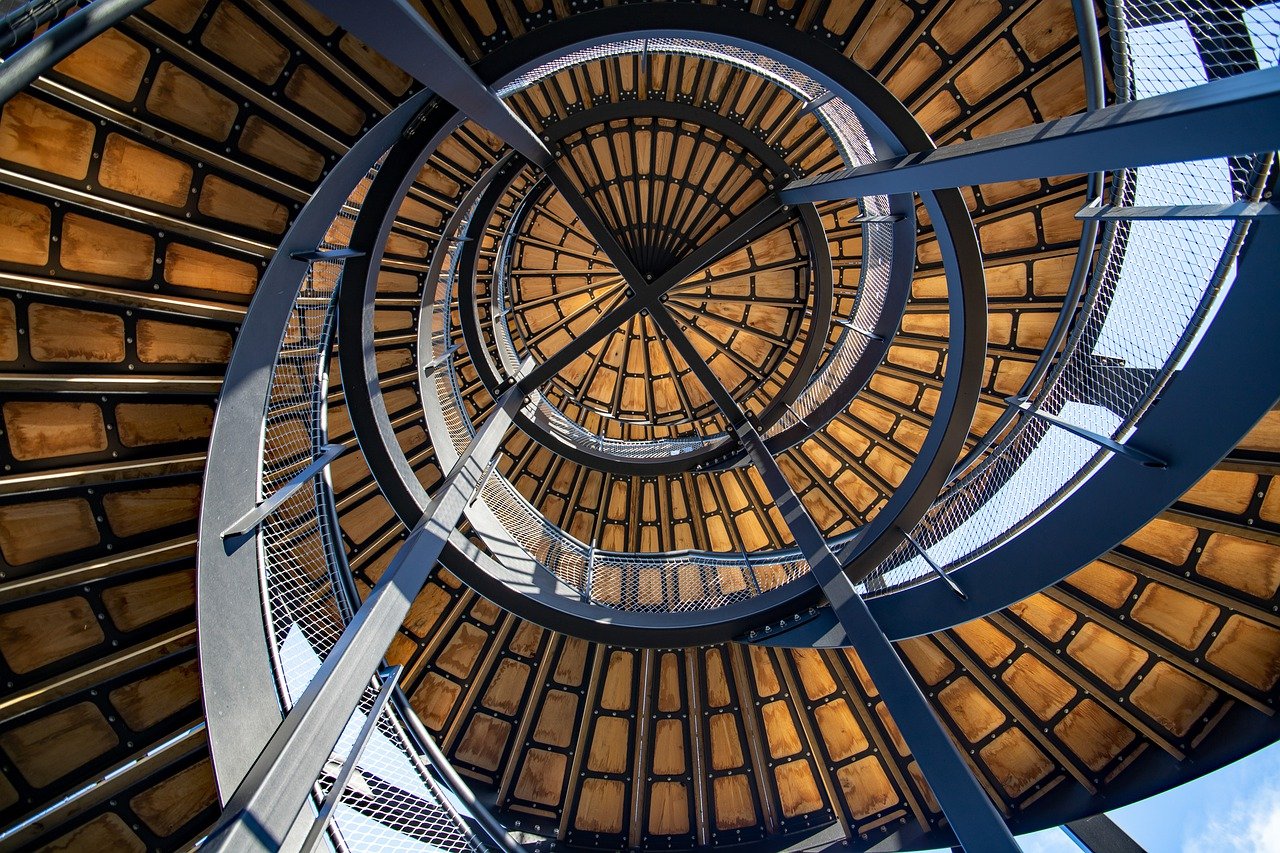
Symmetry and Asymmetry
When it comes to creating captivating artwork, understanding the concepts of symmetry and asymmetry is essential. These two principles can significantly impact the overall feel and effectiveness of your painting. Think of symmetry as a mirror reflecting an image; it brings a sense of balance and harmony to your artwork. On the other hand, asymmetry introduces an element of surprise and dynamism, creating tension and intrigue that can draw viewers in. By mastering the art of both, you can create compositions that are not only visually appealing but also deeply engaging.
Symmetry can be found in nature, architecture, and even human faces, making it a familiar aspect for viewers. For instance, when you paint a landscape, a symmetrical composition can evoke feelings of peace and stability. Imagine a serene lake with mountains perfectly reflected on its surface; this balance creates a harmonious scene that invites contemplation. In contrast, asymmetry can evoke a sense of movement and energy. Picture a bustling cityscape where buildings are arranged in a dynamic, uneven manner, leading the viewer's eye through the chaos of urban life.
To effectively incorporate these concepts into your paintings, consider the following tips:
- Experiment with Composition: Start by sketching your ideas. Try both symmetrical and asymmetrical layouts to see which resonates with your vision.
- Utilize Color and Contrast: Use bold colors or contrasting tones to highlight asymmetrical elements, guiding the viewer's focus.
- Balance Elements: In asymmetrical designs, balance is key. Distribute visual weight evenly across the canvas to maintain harmony.
Another fascinating aspect of symmetry and asymmetry is their ability to evoke different emotions. Symmetrical designs often convey a sense of order and tranquility, making them ideal for serene subjects. Conversely, asymmetrical designs can evoke feelings of excitement and unpredictability, perfect for dynamic themes. By consciously choosing which approach to use, you can influence the emotional response of your audience.
Incorporating both symmetry and asymmetry into your artwork can create a rich visual narrative. For instance, you might start with a symmetrical background and introduce asymmetrical elements in the foreground, creating depth and interest. This technique not only enhances the composition but also invites viewers to explore the painting more thoroughly. Remember, the beauty of art lies in its ability to communicate complex ideas and emotions, and mastering these principles can elevate your work to new heights.
Q: How can I determine if my painting is too symmetrical or asymmetrical?
A: Step back and evaluate your work from a distance. If it feels too static or predictable, consider introducing asymmetrical elements to create more visual interest. Conversely, if your painting feels chaotic, you may want to incorporate some symmetry for balance.
Q: Are there specific subjects that work better with symmetry or asymmetry?
A: Yes, generally, subjects like landscapes and portraits can benefit from symmetry, while abstract works or dynamic scenes often thrive with asymmetry. However, feel free to experiment and find what works best for your style!
Q: Can I mix both symmetry and asymmetry in one piece?
A: Absolutely! Many artists successfully blend both elements to create depth and complexity in their work. Just ensure that the balance is maintained, so the piece feels cohesive.
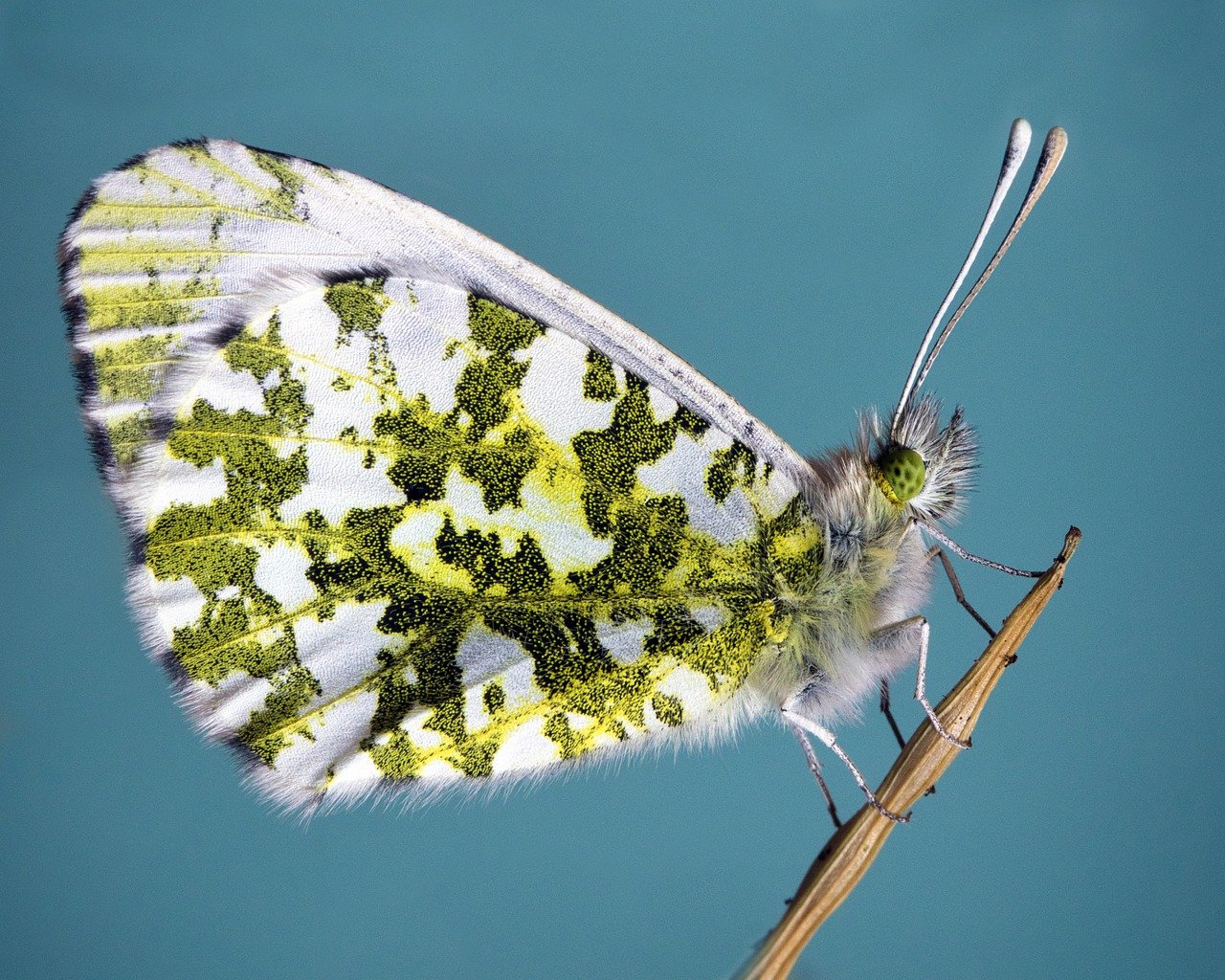
Repetition Techniques
When it comes to creating visually captivating artwork, can play a pivotal role in drawing the viewer's eye and maintaining their interest. Imagine walking through a gallery where each piece feels like a rhythmic dance, each element echoing the others in a harmonious flow. This is what repetition can achieve in your paintings. By strategically using repeated shapes, colors, or patterns, you can create a sense of unity and cohesion that invites viewers to explore your work more deeply.
Think about it: repetition can evoke feelings of stability and comfort, much like a familiar song that you can't help but hum along to. In art, this can manifest in various forms. For instance, you might choose to repeat a specific geometric shape throughout your composition. This not only establishes a visual theme but also guides the viewer's gaze across the canvas. Each repeated element acts like a stepping stone, leading them on a journey through your artistic vision.
Moreover, repetition can also introduce a sense of movement and rhythm, much like the beats in music. Consider the following ways to effectively harness repetition in your artwork:
- Shape Repetition: By repeating specific shapes, you can create a pattern that feels dynamic and engaging. For example, circles can symbolize unity, while triangles might suggest movement or direction.
- Color Repetition: Using the same color in various parts of your painting can unify the different elements. It’s like using a common thread to stitch together diverse fabric pieces into a beautiful quilt.
- Textural Repetition: Repeating textures can add depth and interest. Imagine the tactile experience of a painting where rough and smooth surfaces alternate, inviting viewers to not only see but feel the artwork.
To illustrate the impact of repetition, consider the following table that highlights different aspects of this technique:
| Technique | Effect |
|---|---|
| Shape Repetition | Creates visual unity and guides the viewer's eye. |
| Color Repetition | Enhances cohesion and emotional connection. |
| Textural Repetition | Adds depth and invites tactile exploration. |
In conclusion, repetition techniques are not just about creating patterns; they are about weaving a narrative within your artwork. Each repeated element can tell a story, evoke emotions, and enhance the overall aesthetic appeal. So, next time you pick up your brush, think about how you can incorporate repetition to not only beautify your piece but also to engage your audience in a deeper, more meaningful way.
Q: How can I start incorporating repetition techniques in my art?
A: Begin by selecting a shape or color that resonates with your theme and experiment with repeating it throughout your composition. Observe how it changes the overall feel of your painting.
Q: Is there such a thing as too much repetition?
A: Yes, while repetition can enhance a piece, overdoing it may lead to monotony. Balance is key; mix repeated elements with unique ones to maintain interest.
Q: Can repetition be used in abstract art?
A: Absolutely! In abstract art, repetition can be a powerful tool to create rhythm and visual harmony, allowing the viewer to connect with the piece on different levels.
Frequently Asked Questions
- What are the latest painting trends for this year?
This year, artists are diving into bold color combinations, textured surfaces, and innovative brushwork. The focus is on mixing vibrant hues, adding depth with textures, and experimenting with various brush techniques to create unique artistic expressions.
- How can I create striking visual contrasts in my paintings?
To achieve striking contrasts, try pairing unexpected colors together. For example, combining warm tones with cool shades can create a dynamic visual impact. Don’t be afraid to experiment with different hues to see what resonates with your artistic vision!
- What techniques can I use to add texture to my artwork?
There are several techniques to create texture, such as using palette knives, sponges, or even layering different materials like fabric and paper. These methods can give your paintings a tactile quality that invites viewers to engage with your work on a deeper level.
- What is mixed media, and how can I incorporate it into my paintings?
Mixed media involves using various materials and techniques in one artwork. You can blend traditional painting with elements like photos, fabric, or found objects. This approach allows for endless creativity and can result in truly unique pieces.
- Why are eco-friendly paints becoming popular?
Eco-friendly paints are gaining traction due to their reduced environmental impact and non-toxic properties. Artists are increasingly aware of sustainability and are opting for natural pigments and water-based solutions that are safer for both them and the planet.
- Can you explain the significance of geometric patterns in contemporary art?
Geometric patterns bring a modern touch to artwork, allowing for clean lines and structured compositions. They can create a sense of rhythm and movement, and understanding symmetry and asymmetry can enhance the overall balance of your paintings.
- What are some tips for using repetition in geometric designs?
Using repetition can create a sense of unity and rhythm in your artwork. Try incorporating the same shapes or colors throughout your piece to guide the viewer's eye and create a cohesive look that draws them in.



















